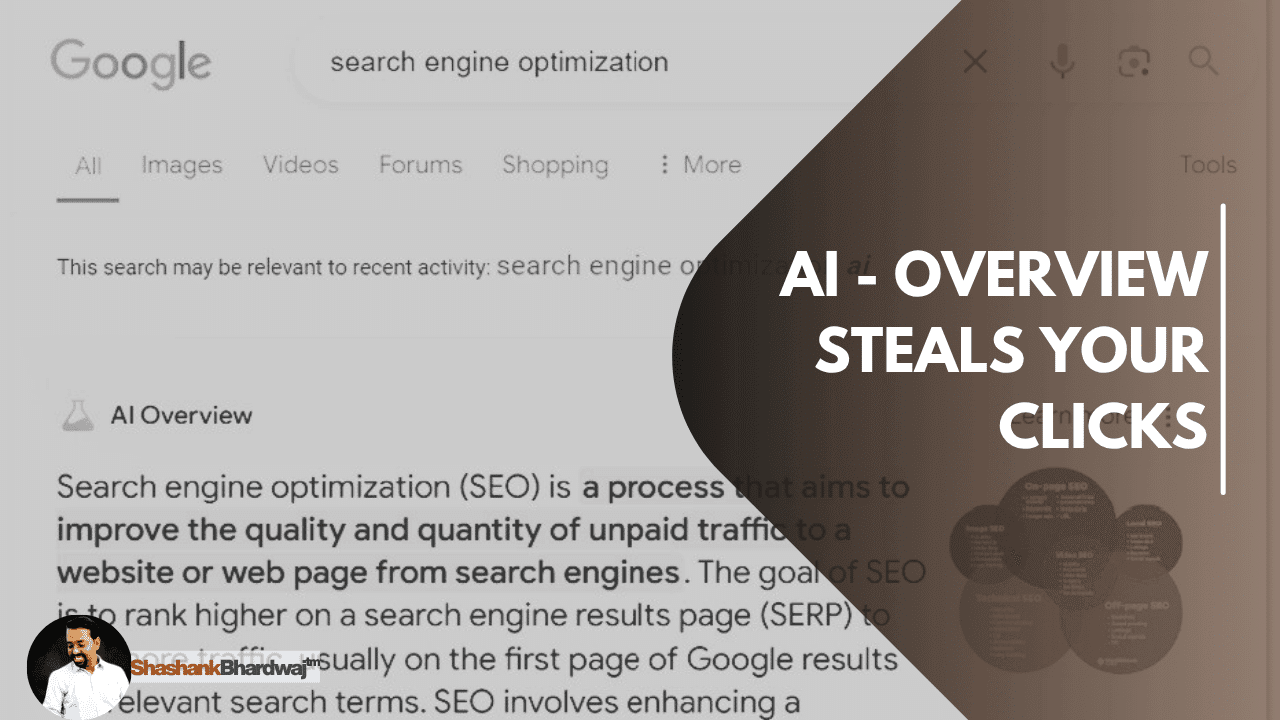Hey guys!
You know me—I’m always trying to crack the code on what’s actually working in digital marketing, especially now with all this AI upheaval. If you’ve been in the game for more than a minute, you’ve felt the same panic.
We spent years mastering SEO, chasing that #1 spot for the click. But now, you see your perfectly crafted article cited right there in the Google AI Overview, and the traffic graph? Crickets.
It’s easy to think, “Game over. All that work for nothing.”
But hold up. What if I told you this is one of the biggest branding opportunities we’ve ever had?
Think about it. When an AI Overview cites your brand as the source, it’s like having the smartest person in the room quote you as the expert. The click isn’t the goal anymore; being the source of truth is.
The game hasn’t ended. The rules have just changed. We’re moving from Click-Through-Rate to Citation-Through-Trust.
So, how do you measure your brand’s impact when the old metrics are fading? You need a new playbook.
Table of Contents
The New KPI: It’s Not About Clicks, It’s About IMPACT
Forget just staring at organic traffic. We need to build what I call the IMPACT framework. This is how you prove your worth in the AI Overview era.
I – Identify Citation Share & Velocity
This is your new “ranking” metric. It’s not about position #1, it’s about being the source.
- What to Measure: How often and for which queries your content is cited in AI Overview and other generative AI answers.
- How to Do It:
- Manual Checks: Seriously, just start here. Search for the core topics you own and see if you appear. Take screenshots.
- Advanced Tools: Platforms like SEMrush and Ahrefs are rapidly adding features to track “AI Overview appearances” and “SGE visibility.” Get on these beta features now. Moz is also exploring this space.
- The Goal: Your “Citation Share” should be going up. Are you becoming the go-to source for answers in your niche?
M – Mine for Brand Sentiment & Accuracy
A citation is useless if it’s wrong or pulls a negative snippet. You need to know what the Google AI Overview is saying about you.
- What to Measure: The context and sentiment of the citation. Is the AI accurately representing your helpful, authoritative content?
- How to Do It:
- Brand Monitoring Tools: Use tools like Brand24, Mention, or Talkwalker. Set up alerts for your brand name + “according to” or “as cited by.” See if the citation is sparking conversation on social media or forums.
- The Goal: To ensure your brand is associated with accurate, positive, and helpful information. This is pure brand equity.
P – Prove the Indirect Lift
This is where you connect the dots to business value. Zero clicks are hidden parameters, but the influence is real.
- What to Measure: The correlation between citation velocity and other metrics.
- Direct Traffic: Are people, after seeing your name in Google AI Overview answers, starting to type your URL directly into the browser?
- Branded Search: Is there an increase in people searching for your brand name instead of generic terms?
- Assisted Conversions: In Google Analytics, look at the “Top Conversion Paths” report. Did a user interact with an AI Overview citation (tracked as a referral or part of a brand campaign) before later converting via a direct or branded search?
- How to Do It: This is all about cross-referencing data in your analytics. Look at timelines. Did a spike in citations precede a spike in direct traffic? That’s your proof.
A – Adopt Upper-Funnel Metrics
Time to give Impressions the respect they deserve. In the AI world, an impression is a moment of brand-building and trust-building.
- What to Measure: Impression share in Search Console and view-through conversions.
- How to Do It:
- In Google Search Console, look at your Impression share for queries where you’re cited. A million impressions for a query where you’re the source is like a million-person billboard calling you an expert.
- The goal is Topical Authority. Google now sees you as the expert, which influences your ranking potential for a whole cluster of related topics.
C – Craft Content for “Source-ability”
This is the biggest shift. We’re no longer optimizing for an algorithm; we’re optimizing to be the best possible source for an AI.
- How to Do It:
- Structure is King: Use clear, hierarchical headings (H2, H3, H4). Make your content incredibly easy to parse.
- Schema Markup is Non-Negotiable: This is how you talk directly to the Google AI Overview. Implement Article Schema, FAQPage Schema, and HowTo Schema. Tell Google exactly what your content is about, who wrote it, and when it was published.
- Become the Encyclopedia: Your content must be the most comprehensive, trustworthy, and well-sourced piece on the topic. Link out to high-authority sources. Show your work. Demonstrate E-E-A-T (Experience, Expertise, Authoritativeness, Trustworthiness) on every page.
- Answer the Question, Then Go Deeper: Don’t just state a fact. Explain the “why” and “how.” AI overview is looking for depth and context to provide a valuable answer.
T – Technical Setup for the Knowledge Graph
You want Google to know it can trust you. This is about building your site to be a library for the AI-overview to measure and rank.
- How to Do It:
- Author Bios: Have detailed, verifiable author bios with clear credentials.
- Site-Wide Authority: Build a strong backlink profile from reputable sites. In the AI’s eyes, links are still votes of confidence.
- Site Architecture: A clean, logical site structure (like the H – Hierarchy in the SHOP framework) helps AI understand and categorize your content better.
The Bottom Line? Stop Thinking Like a Traffic Hunter.
The shift is mental. It’s not about gaming an algorithm for a click.
It’s about becoming so fundamentally helpful and authoritative that both humans and AIs have no choice but to see you as the primary source.
What would make you trust a brand enough to quote it in your own work? Be that.
Google rewards entities that help it give the best, most trustworthy answer instantly. Your goal is to be that entity.
This is the shift from SEO to GEO – Generative Engine Optimization. It’s a brave new world, but the core principle remains: help people (and now, AIs) solve their problems.
Hope this deep dive helps, guys. This is a conversation we’re all figuring out together.
Shoot me up with your thoughts in the comments. Have you seen your content in AI Overviews? What impact have you noticed? Let’s crack this code together.

